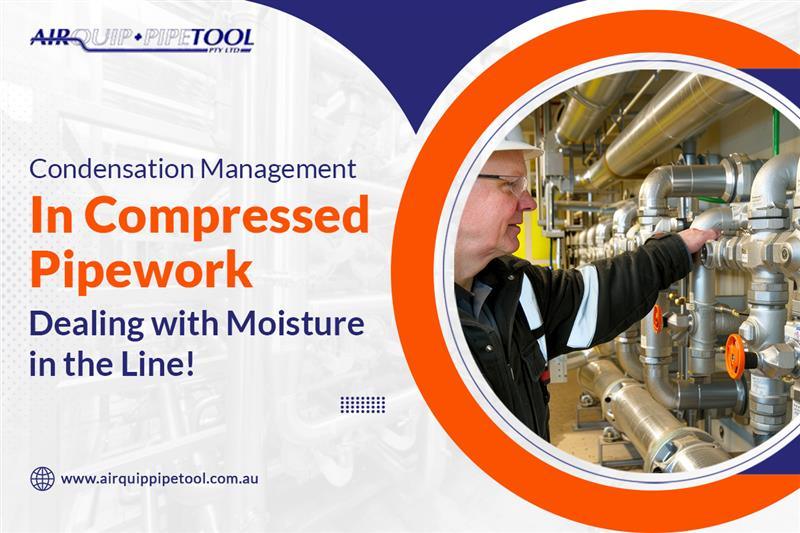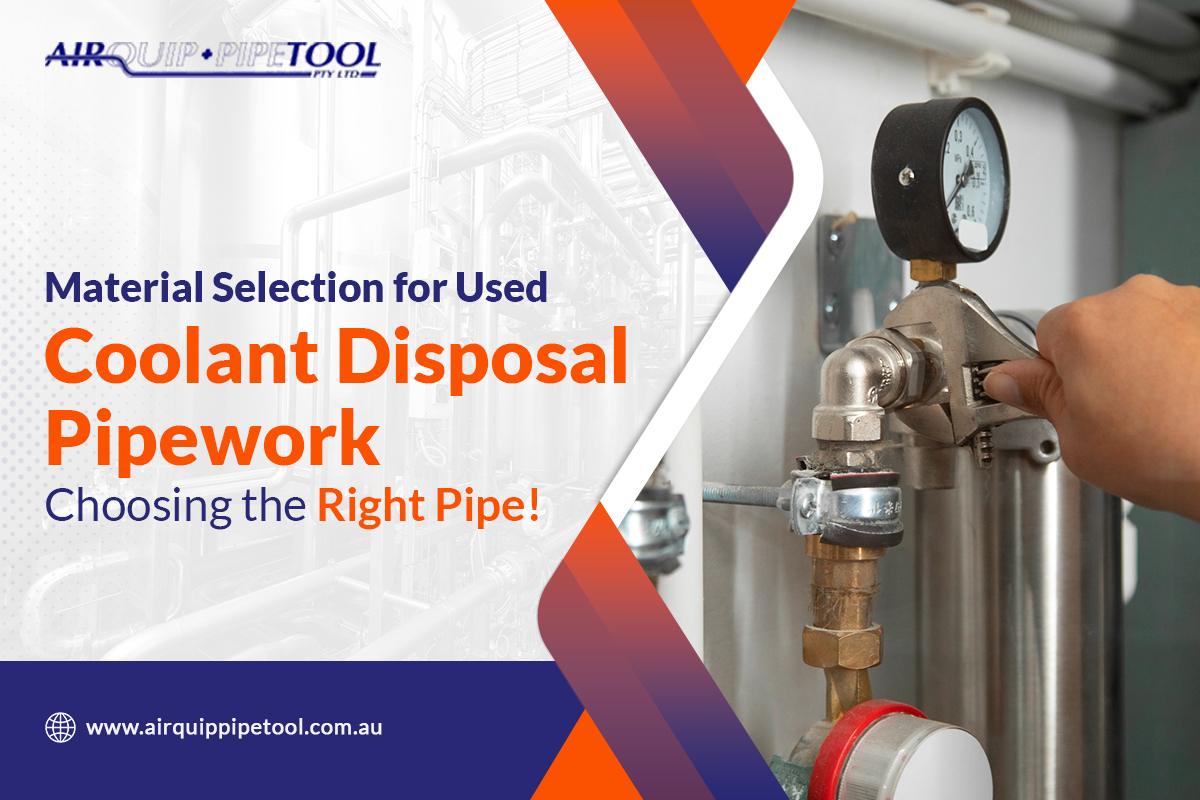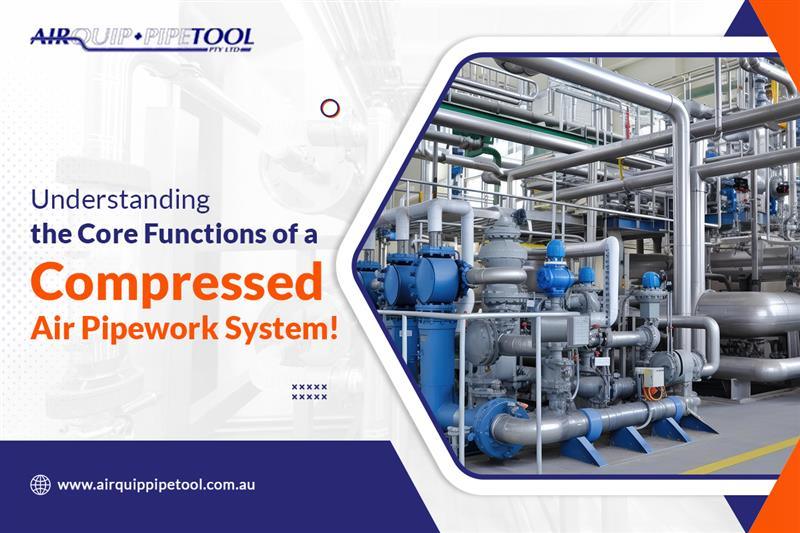- by airquippipetool
- . 19 Nov 2025
Pressure Drop In Compressed Air Reticulation Systems: Causes, Consequences & How to Minimise It?
When installing compressed air pipework in any industrial or commercial setting, ensuring the long-term integrity and efficiency of the system is essential. One key component in achieving this is the expansion loop—a vital yet often overlooked feature in piping design.
At Airquip, we believe in providing more than just high-quality products—we ensure your systems are installed and maintained to the highest standard. Expansion loops are one of the critical elements that we incorporate into every installation, and here’s why they are so important.
An expansion loop is a specially designed section of piping that allows the pipe to absorb and accommodate movement caused by temperature changes. This movement, known as thermal expansion and contraction, happens naturally when pipes heat up or cool down. Without a mechanism in place to handle this movement, pipes could become damaged, leading to leaks, bursts, or misaligned fittings.
An expansion loop consists of a series of 4 right-angled pipe connections that form a loop shape. These loops create a “bend” in the pipework that provides enough flexibility for the pipe to move without putting undue stress on the rest of the system. They work by allowing the pipe to expand or contract within a controlled space, absorbing the changes in length as the temperature fluctuates, whether from seasonal temperature shifts or from the hot or cold nature of the fluid or gas inside the pipes.
The primary job of an expansion loop is to prevent damage caused by thermal expansion and contraction. When a fluid, like compressed air or any other media, travels through a pipe, its temperature can rise and fall, making the pipe expand and contract. Over time, these constant shifts in size could result in:
An expansion loop helps to avoid these issues by providing the pipe with the necessary room to move. It acts like a shock absorber, reducing strain on the system, ensuring that everything from the pipe to the fittings and valves remains intact.
Visually, an expansion loop is a simple yet effective feature that stands out in a piping layout. The loop is made up of a series of right-angled connections arranged in a compact, typically rectangular or square shape, which looks somewhat like a “kink” in the pipe. These loops are strategically placed at set intervals along long stretches of pipe to ensure that every part of the system has the room it needs to expand and contract safely.
You’ll typically find these loops in areas where straight pipe runs extend over longer distances, especially where there are temperature fluctuations. The loops will be placed based on the material of the pipe, its diameter, and the nature of the fluid being transported.
Pipework is designed to withstand the pressures and forces associated with moving fluids or gases. However, constant temperature fluctuations can lead to movement within the pipe that, without an expansion loop, may cause damage. An expansion loop allows the system to adjust to these fluctuations without causing cracks, misalignments, or breakages in the pipework.
Installing an expansion loop might seem like an added step, but it’s actually a proactive approach that can save you from costly repairs down the line. Pipes that aren’t equipped to handle thermal expansion can fail prematurely, leading to downtime, repair costs, and system inefficiencies. By incorporating expansion loops from the outset, you ensure your pipework system performs reliably for years to come.
Whether you’re running a high-performance compressed air system, transferring fluids, or working with any type of pipeline installation, maintaining system integrity is essential. Expansion loops help preserve the structure of your entire system, ensuring that all components function as intended, without the added risk of mechanical damage caused by thermal stresses.
Systems without expansion loops are more likely to experience mechanical failures. A burst pipe or a faulty fitting due to lack of movement allowance can lead to costly downtime. Installing expansion loops reduces the likelihood of such failures, minimising the need for costly repairs and maximising system uptime.
At Airquip, we don’t just supply the right products—we understand the intricacies of pipework installation services and the importance of getting the details right. Expansion loops are just one example of how we ensure your compressed air and fluid systems are installed to the highest standard. With years of expertise in the field, we know exactly when and where to install these loops for optimal performance, protecting your system’s longevity and efficiency.
We approach every installation with the same care and precision, making sure that every component of your system works together seamlessly. Whether it’s a small-scale installation or a large industrial system, Airquip’s skilled team ensures that every detail, including expansion loops, is handled professionally.
If you’re looking for the best in pipework installation services, look no further. Our commitment to quality, safety, and performance sets us apart as leaders in the industry.
Contact Airquip today to learn more about our installation services and how we can help you design and install a compressed air or fluid system that lasts!
 " alt="">
" alt="">Pressure Drop In Compressed Air Reticulation Systems: Causes, Consequences & How to Minimise It?
 " alt="">
" alt="">Material Selection for Used Coolant Disposal Pipework: Choosing the Right Pipe!
 " alt="">
" alt="">Understanding the Core Functions of a Compressed Air Pipework System!

An efficient industrial air network is about ensuring steady pressure, minimal energy loss and reliable performance from the first compressor discharge to the tool on the line. With well-designed compressed […]

The materials used in coolant disposal pipework are the main factor. So, industries need to understand what material- HDPE, Aluminium, or Stainless Steel (316L) works best for their conditions. Airquip […]

The main gases in compressed air are nitrogen (78%) and oxygen (21%). Compressed air molecules are small and possess kinetic energy, enabling them to travel at a higher speed. Also, […]
Copyright © 2025 airquippipetool | All rights reserved